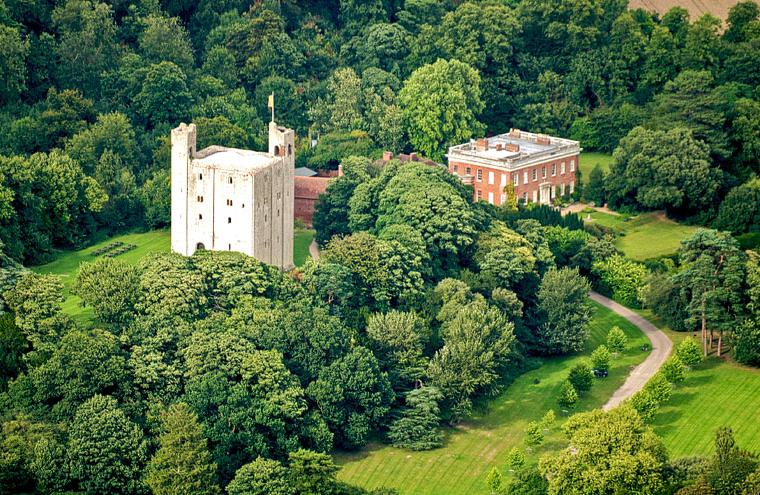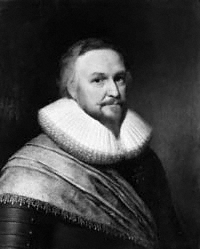Normans
Fighting Vere's Earls of Oxford, Essex, Duke of Ireland, Marquess of Dublin, Justice of Chester, Sheriff of London, Sheriff of Bucks, Lord Great Chamberlain, Count of Guisnes, Comes de Guisney, Viscount Bolebec - Magna Carta barons, co-authors of the Bill of Rights and aroused the spirit of American colonization.
Vikings
British, Danish, Irish, Viking, Norman
line and descendants from
Charlemagne lines and many Royal households
Vár, Ver,
Veras,
Ver'us, Vear, Veare, Veer, Vere, Veere, Veri, Vir, Vire, Verres, Verre,
Vercingetorix,
Wear,
Weir, Were Fyer, Revere, Spear, Speare, Spere, Švear, Fear, Fere, Freyr, Sweeney,
GuineHwyfar,
Severe
Old Norsk Vere it becomes the same as and in Latin 'Verus is Vere' thus 'True is Truth'!
In Danish - Å Vere Norse - Danish is 'to be Norwegian or Danish'.
Latin 'veere verus vere' is to 'Vere really true'. Vero means truth. 'Vere north'' means 'True North''.
The Vere family motto is 'Vero nil Verius' which means Nothing Truer Than Truth.
Abri Vere,
Horace Vere and Edward Vere 17th Earl of Oxford all used the
Truth
effectively.
By adopting a
probable option, set aside some historical imaginations from
spending far too much time staring at the truth we should move on to
the Verus 'These real Viking noble savages'.
In the Viking timeline these Fighting Vere's
were originally Viking Norsk Danes from both "Vire
on the Cotentin Peninsular of Normandy" and from the 'Norse Royal Courts' or 'The place of
proclamations of Kings' doing the 'Germanic
Thing' at "Vear
Vestfold in
Norway".
Prior to the Viking age 'Ver' history becomes
interestingly seducing, excitingly romantic full of monumental
European & Herculean mythological tails which resonates with all
free European peoples everywhere.
Those "Vear's" with the
Duke of Normandy in 936 A.D. when there was a considerable
migration of the original Celtic inhabitants, the whole coast
line of northern Europe resulted in being Viking settlements
and Northern France ending up most thoroughly totally settled
in
Normandie
["northman"].
thus they become
Norman,
Vikings speaking French.
William Longsword is said to have admitted a fresh Danish colony into his newly acquired province of Coutances and when Harald Blaatand, the Danish king, settling the affairs of the Duchy and acting as a faithful friend to the young Duke, returned to his northern realm, many of his followers remained behind in the Cotentin and the Vears were amongst them.
It was not long before these Danish settlers had to defend their homes against a devastating invasions. In 996 A.D. King Ethelred of England sent an army to burn and destroy Normandy, which landed and was depleted. Not too soon after, come the King of the Raiders of Danish and Slavic descent. King, Cnut invades Wessex in England with a Danish army of 10,000 in 200 longships, guaranteed to a terrify any prospect at anytime. In his time he is acclaimed "the most effective king in Anglo-Saxon history", Cnut the Great as King of England, Denmark, Norway and Sweden. Known as a Prince of Denmark, Cnut won the throne of England in 1016 in the wake of centuries of Viking activity in northwestern Europe. His accession to the Danish throne in 1018 brought the crowns of England and Denmark together. Cnut maintained his power by uniting Danes and Englishmen under cultural bonds of wealth and custom, rather than by sheer blood brutality. After a decade of conflict with opponents in Scandinavia, Cnut claimed the crown of Norway in Trondheim in 1028. The Swedish city Sigtuna was held by Cnut.
Amongst all these troubles 'William the Bastard' also in a long struggle in securing and establishing power over Normandy, he arises, William calls for an invasion force and starts the Norman conquest of England in 1066. 'Albri Comes' de Ver is with King William the conquer.
Leland gives an account of the superior ascent of the Vere's from Milo, Duke of Manor of Gavray. They are Aungiers, a brother-in-law of many deeds, noted in the Trans-Charlemagne. Collins repeats the actions of the Society of Leland. Percival Golding of Normandy, to which (Harl.MSS., 4189) supplies the de Vere's are parties.
There is a letter which shows the pedigree, dated 1271, from William descent of the Vere's from Serug, de Vire to Odin, Bishop of Bayeux, the great-grandfather of Abraham, confirming a grant; also the sale. Some later genealogists have suggested of the manor of St. Sauveur in that the Vere's may have come from Veere [Vere (English)], Zeeland in 1301 however, most unlikely as the port was built in 1355 by Benoulf de Ver, then again there is the historical question over what exact area Verus's of Germania came from.
The family of Vere, Earls of Oxford, was
one of the most distinctly ancient and noble lines of all in
England. Dating from A.D. 1137 in England, the earldom continued in
an un-broken succession of twenty earls until 1703, making for a
period of nearly six hundred years and today the bloodline
continues.
House of Truth.
The Vere's inter-married with Bigods and Canteloupes, Clares and De
Quinceys, Uffords and Mortimers, Scropes and Howards, Nevilles and
Courtenays, all the most historical families of the country.
They succeeded to five baronies of Bolebec, 2 Sanford, 3 Badlesmere,
Scales and Plaiz and they were hereditary Grand Chamberlains of
England.
These formidable Danish settlers were ruled over by Neal de St.
Sauveur, whose castle was a few miles south of Valognes, and who was
Viscount of Coutances. His knights were the ancestors of many of our
English nobles. The two rivers Soulles and Syenne flow through the
most beautiful valleys of the Cotentin, and fall into the Havre de
Regneville, opposite the Island of Jersey. Courcy and the old city
of Coutances are on the Soulles.
The Syenne rises near the village of
Percy, and flows northward by the Abbey of Hamlye, through the
forest of Gavray, and by the village and castle of Ver, to the
Regneville estuary. All this is now a country of rich meads and
hills and valleys, of orchards and small fields of pasture and
buckwheat, with well timbered hedgerows and glorious views of
distant wooded hills. At the ruined Abbey of Hamlye, a picturesque
old stone bridge crosses the Syenne, with orchards on either bank,
and cliffs rising abruptly from the valley, and crowned with oak
woods.
From this lovely district came the Percys and Paganells, the De
Courcys and De Vere's. The
castle of the Paganells was on the wooded crest over hanging the
rich vale of the Syenne, and the stately Abbey of Hamlye was built
by them near the river bank. Lower down the valley was the castle
and manor of Vire,
Château de Vire held of the superior manor of Gavray, the early
Norman home of the Vere's.
Magna Carta barons
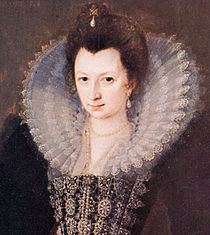
|
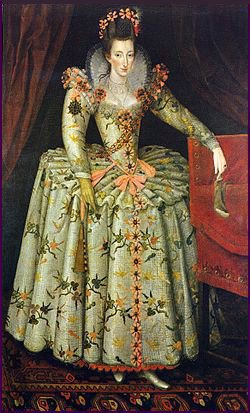 |
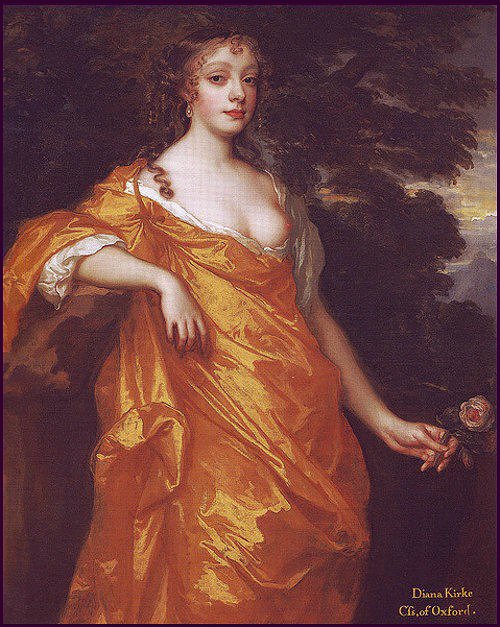 |
.jpg) |
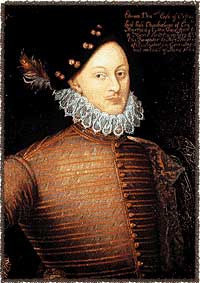
|
